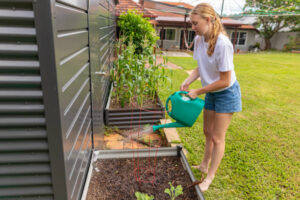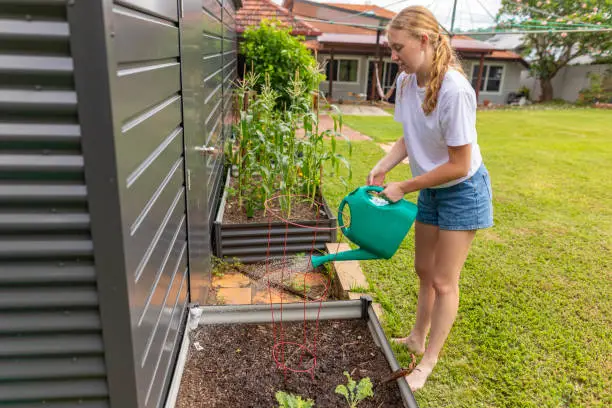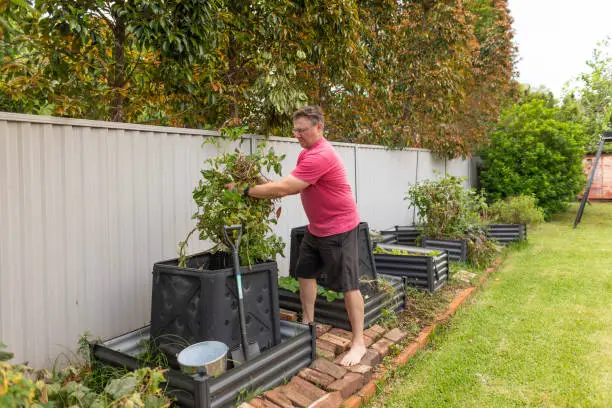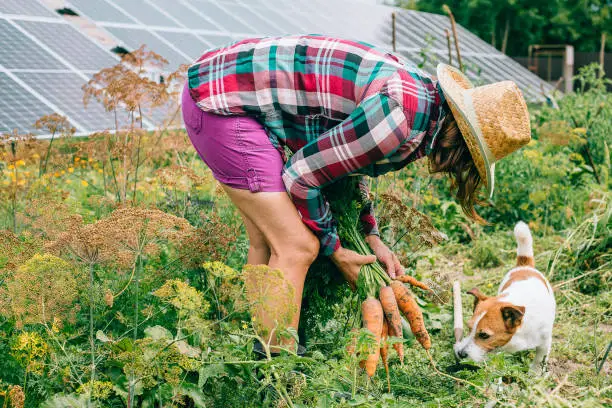A Complete Guide for Backyard Homesteaders: Crop Rotation and Seed Ordering
Winter may seem like a time for backyard homesteading enthusiasts to relax, but it’s also a time for preparation and introspection. During these quieter months, plan next year’s garden by considering crop rotation and seed ordering for a plentiful and sustainable yield.

Crop rotation, as old as agriculture, is essential to sustainable gardening. This entails rotating crops in the garden from season to season or year to year. Avoiding soil nutrient depletion, pests, and diseases can improve soil structure and fertility over time. The backyard homesteader might benefit from learning and applying crop rotation basics to their garden.
When contemplating crop rotation, plants have distinct nutrient needs and insect susceptibilities. Grouping plants into families simplifies controlling differences. Because they share illnesses and pests, nightshades like tomatoes, peppers, and eggplants should not be grown together. Instead, legumes like beans and peas may fix nitrogen in the soil, replenishing a nutrient nightshade need.
Crop rotation in the backyard farm involves plant family knowledge, inventiveness, and foresight. Sketching out vegetable plots and labeling what was planted where last year helps some homesteaders. This visual aid can help plan next year’s garden and rotate crops for soil health.
Winter frost allows meditation and planning, making it the ideal time to order seeds. Seed ordering is an act of hope and anticipation, not just a chore. With their many heirloom and hybrid types, Seed catalogs and websites can inspire and excite you for the season.
When ordering seeds, consider past planting season triumphs and obstacles. Did some crops thrive or struggle? Reviewing last year’s garden can help you repeat achievements and make improvements.
Garden diversity is both ornamental and practical. Planting diverse crops to lessen insect pressure and attract pollinators can achieve a more robust and productive garden. Include a mix of early, mid-season, and late-maturing seeds to stretch the harvest season and avoid overwhelming yields.
Keeping seeds year after year is a lovely example of backyard homesteading’s sustainability and self-sufficiency. If you haven’t previously, choose a few crops to save seeds from this season. Beginner seed savers should try tomatoes, beans, and peas because they are easy to process and successful. Seed saving lowers the need to buy fresh seeds yearly and lets you choose kinds that flourish in your garden, improving resilience and productivity.
The stillness of winter allows backyard homesteaders to plan and dream about next year’s garden. Proper crop rotation and seed arrangement can create a productive and sustainable garden. This planning phase, when gardens are dormant under snow, reminds us of the natural world’s cycles of growth and rest.
Plans made in winter will soon come true as spring approaches. The seeds ordered with hope and anticipation will be sown, and the carefully planned rotations will be implemented, producing a season of growth and abundance. Thus, the backyard homesteader weaves previous experiences, present preparations, and future hopes into a beautiful tapestry of sustainable life.
Winter Wonders: Creative Indoor Homesteading Projects
Backyard homesteading fans may wonder how to keep their green thumbs active while the snow falls and winter chills the air. While the garden sleeps, the indoors provide many creative and productive options. Winter offers a unique opportunity to ponder and learn in various homesteading areas, from crafts with nature’s abundance to canning.
Winter indoor tasks can be fun and creative. Homesteaders’ traditional hobby, crafting, thrives indoors. Imagine making comfortable blankets from your sheep’s wool or caps from fall berry yarn. Crafting is a meditation that links us to nature and the materials.
Canning, a homesteading staple, is in the winter kitchen. Although historically done in summer and autumn, winter canning can preserve meats, make substantial stews and soups, and pickle late-harvest or stored vegetables. Canning in the winter fills pantry shelves and warms the home and heart with cooking smells and self-reliance.
Winter is also an excellent time to plan for gardening. This may involve starting seeds indoors, which puts spring forward and brings greenery within. Seeing seeds grow under grow lights is rewarding and a physical connection to the seasons.
Experimental homesteaders may start a mini-mushroom farm in a limited area. Growing oyster and shiitake mushrooms on logs or in substrate bags is a beautiful introduction to fungi. This gives us a winter harvest of fresh mushrooms and helps us comprehend the complex web of life that feeds our food systems.
Handmade soaps and candles are another homesteading-inspired indoor hobby. These crafts use natural substances like beeswax, honey, and herbs to make attractive, functional home decor and personalized gifts for friends and family. Crafting soap or candles from scratch reminds us of the basic pleasures in life and the delight of crafting something by hand.
Winter may also highlight herbalism, the ancient art and science of employing plants for healing and wellness. Drying and conserving herbs from the warmer months, making herbal drinks, salves, and tinctures, and studying plant qualities can give winter purpose and connection to nature. This hobby enriches the homesteader’s life with natural treatments and deepens their respect for plants.
Another winter project that suits reflection is bread making, with its slow, repetitive kneading and patience for rising. Exploring grains, possibly even those produced in your garden, sourdough starters, and international bread recipes, can make the kitchen a place of discovery and delight.
Indoor homesteading initiatives let us slow down and connect with our sources. They show us homesteading, which includes crafts, cooking, learning, fieldwork, and gardening. These winter tasks are threads in the tapestry of living a sustainable, fulfilling, and deeply rooted life in nature.
The backyard homesteader enjoys quiet, creating, cooking, and planning in winter. These activities nurture growth, learning, and self-sufficiency in homesteading, not just pass the time until spring. Let the bitter winds and snowfall, for the homestead’s heart, beats strong with fire, warmth, and creativity.
The backyard homesteader uses winter’s stillness to create and prepare. Planning next year’s crop rotations, exploring cozy crafts that warm the homestead, or storing the pantry with winter-preserving fruits are all steps toward a more sustainable and enriching life. In the winter, homesteaders’ skills and knowledge increase, but not their gardens. Homesteaders find warmth in winter’s chill as they order seeds and plan. They’re excited for spring and proud of their well-prepared property.





Leave a Reply